The 1-Year Topwater Lure Experiment (RESULTS)
- By: Joseph Simonds
- on
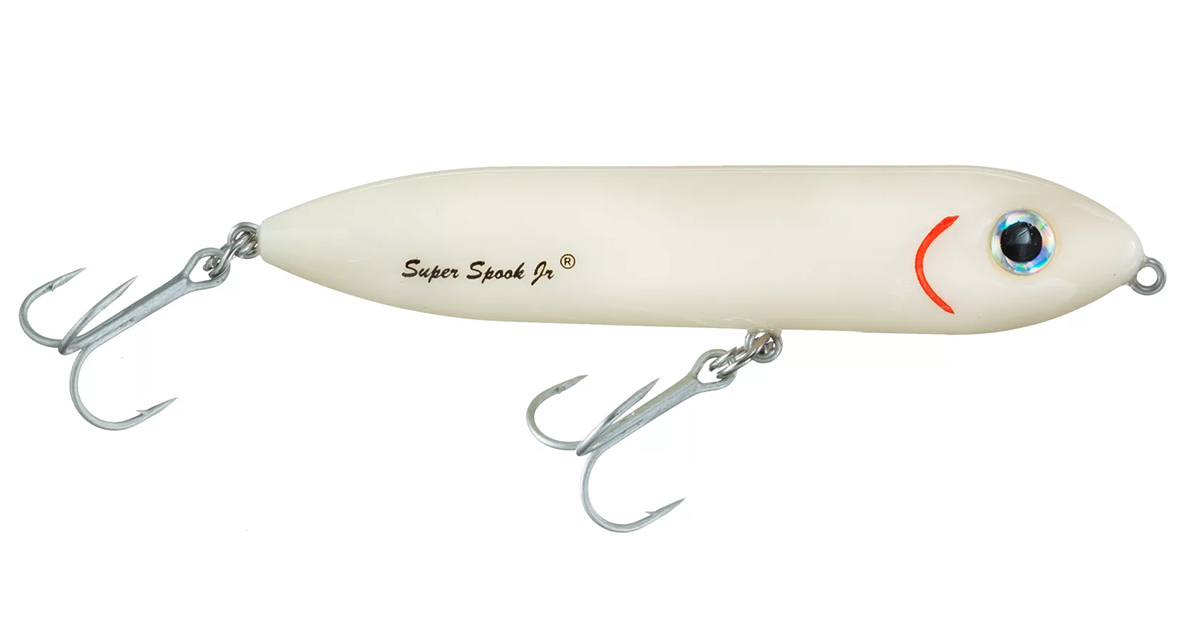
If you like to geek out on topwater lures like we do, then you’re going to love this…
One year ago, Salt Strong Insider member Pat Ogletree decided he would only fish with topwater lures for an entire year.
Rain or shine, windy or calm, hot or cold, he only used topwaters.
He fished multiple times per week (year round) and got some incredible insight into using topwaters that 99% of people will never learn.
Today, I’ve got him here with Luke, Tony, and me, as we discuss everything you could possibly imagine about topwater lures, including:
- What sizes work best during certain seasons
- Whether or not color matters for topwaters
- Which brands are the best
- How to make custom tweaks to your lures to catch more fish
- The best rod, reel, and line to use topwater lures with
- And much more
This conversation blew my mind and I know you’re going to love it, too.
You can watch the video version of this podcast below, listen to the audio version by clicking the play button underneath it, or listen to it on iTunes, Stitcher, or Spotify.
P.S. Don’t forget to subscribe on iTunes, Stitcher, or Spotify and leave us a review!
The 1-Year Topwater Lure Experiment [VIDEO]

The 1-Year Topwater Lure Experiment [PODCAST]
Note: Don’t forget to subscribe to the Salt Strong podcast on iTunes, Stitcher, or Spotify and leave us a review!

Related Podcasts:
- HOW TO FIND 90% OF ALL FEEDING FISH IN YOUR AREA (90/10 FISHING RULE)
- WHAT NOT TO DO WHEN USING TOPWATER LURES (LIVE FISHING TRIP)
Here’s a timestamped table of contents from my conversation with Pat Ogletree, Luke, and Tony about using topwaters for a year straight:
0:15 – How the “1 Year Topwater Lure Experiment” came about
4:30 – How many different topwater lures Pat tried
6:33 – What equipment works best with topwater lures
7:34 – The one time in winter when you can catch fish with topwater lures
8:30 – Pat’s favorite setup for throwing topwaters (and why he prefers moderate fast over fast action rods)
11:28 – Pat’s interesting thoughts on using treble hooks vs. single hooks with topwater lures
14:52 – Using baitcasters vs. spinning reels for topwater lures
15:46 – Pat’s favorite reels for throwing topwaters
18:14 – Using topwater lures in the spring (including which type of topwater catches the biggest trout)
24:23 – The best time of day to catch fish on topwater in the spring
26:39 – Using topwaters in the summer
28:45 – Whether or not topwater lure color makes a difference
29:10 – How important wind is when you’re throwing topwater lures
32:00 – What size topwater lure to use in each season
34:44 – When chuggers and poppers work best
37:00 – How to use topwater lures to find (and catch) and more fish
37:45 – What to do if you see a lot of fishing following your topwater, but not striking
41:49 – Which lure caught Pat the most fish
- Heddon Super Spook Jr. (this caught the most fish)
- Rapala Skitter V (this caught the biggest fish)
44:13 – What to do if the fish aren’t biting
45:32 – Using scent with topwater lures
48:36 – Pat’s thoughts on tides and moon phases (if you’re a weekend warrior, this is for you)
49:48 – Pat’s favorite season to fish topwater
51:00 – The best type of area and depth to fish topwaters
57:15 – Pat’s go-to topwater lures he’ll continue to use
- Spring:
- Summer:
- Heddon Super Spook Jr.
- MirrOlure She Pup (on windy days)
- Rapala Chug Bug
- Wakebait
- Fall:
The 1-Year Topwater Experiment Report
Below is Pat’s writeup of his 1-year topwater experiment.
It’s detailed, helpful, and insightful.
Enjoy!
Introduction
I did what I called an experiment, to only fish topwater for an entire year so I can better understand when, where and how to use them.
I have seen plenty of reports and pictures from around the internet of all these fish being caught on topwater and wanted to learn how to catch them too.
I can read articles and watch videos, but I am the type of person that needs to see for myself.
The idea of using only one type of lure for a whole year is in that time frame I should run into just about every type of fishing
condition and I will have to figure out how to make them work.
Hopefully, through this process, I should have a better understanding of the best time, place, and way to use them.
So, I unloaded my kayak of all the tackle that I had in it and for the rest of the year, I only brought two small boxes of topwaters.
This is the culmination of what I discovered over the past year.
Topwater Gear Basics
One of the nice things about topwater is that you do not have to have specialty equipment to fish with them.
No lightweight super sensitive rod or top-of-the-line reel is needed, you will see the strike before you feel it.
Just about any setup that you use for everyday inshore fishing will work, just make sure the lure weight falls into the range the rod is designed to throw, preferably somewhere right in the middle.
However, if you are looking to buy a specific rod and reel just for topwater I would suggest a rod in the 6’6” to 7’ range with a moderate fast action, either spinning or baitcasting.
The reason for the moderate fast action is because of the heavier nature of the topwater plug and the fact the hooks are smaller compared to soft plastics you need the rod to give a little to keep from pulling the hooks out of the fish’s mouth.
A moderate or parabolic action rod, I feel, will not have enough backbone to work the lure properly.
With the preferred spinning set up I use 10-pound braided line when fishing the flats for most of the common inshore fish, on my baitcasters I will use 20- or 30-pound braid with a few exceptions.
My go-to setup right now is a Falcon Coastal XG 6’8” MH baitcasting spooled with 30-pound braid.
With that outfit I can easily get 50-60-yard casts with a ½ ounce lure.
I do have a baitcasting set up that I will use to throw the larger plugs that are ¾ ounce and over, that rod is a fast action.
The reason for the fast action is that the backbone of the rod needs to start closer to the tip to make sure you can work the
larger lures correctly.
To make up for the lack of give in that rod I run a low stretch mono line on it.
Pline CXX is a good budget line for this and Sunline Defier Armilo is the best overall mono I have found for
main line when using topwaters.
Leader material must be mono, fluorocarbon sinks faster, and you will have more hook tangles if you use it.
Berkley Big Game is a great option because of its elasticity and shock absorption.
The length of the leader does not need to be more than 12 inches and I keep it at 30-pound test.
I will tie a non-slip loop knot on all my topwaters to give them the most action, but on chuggers, poppers, and wake baits you could get away with a snug knot since those are worked with a straight retrieve.
When And Where To Use Topwater
Topwater lures really shine in two specific situations, although they work well in many different ones.
The first is as a search bait.
You can cover a lot of ground with them because of their long casting ability and the speed in which they can be worked.
When covering an open flat, row of docks, or a mangrove shoreline you can quickly discover a pattern and further dissect it from there.
The second is when there is a ton of bait present in the area you’re fishing.
One of the most difficult things to do when the bait is thick is to get the fish to notice your lure.
Because of their nature, topwaters create a lot of commotion and noise which the predator fish can single out and key in on, and they can really shine in these situations.
The best time of the year to use them is the warmer months: spring through fall.
If it is early spring, I prefer a warming trend instead of the day after a cold front and I will continue to use them all the way until late fall until after the first couple of cold fronts come through.
You can catch fish in the colder winter months on topwater when the conditions are right though.
The best conditions to use topwater is in low light such as early in the morning or on overcast days with
a little bit of a breeze.
Typically, the bite will shut down when the sun clears the tree line, and the shadows go away.
You can extend the bite by fishing an eastern shoreline in the morning because the shadows will stay there longer than on a western shore and the opposite is true in the afternoon.
Muddy or turbid water will also extend the bite due to less light penetrating the water.
I like to have at least two feet of depth when throwing topwaters, any less than that the fish get spooky and typically do not like loud or noisy lures.
If I am finding fish in less than two feet, I will use smaller and quieter types of topwater, something without a rattle or knocker preferably.
On the deeper side, if the water is clear you can effectively fish them in 8 or even 10 feet of water.
Fishing topwater is no different than any other lure in the sense that you still need to fish the high percentage areas that will hold feeding fish.
Look for areas with structure such as docks, seawalls, potholes, oyster bars, depth changes and the more of these combined the better.
My favorite way to use them is on flats with potholes or wind-swept mangrove tree lines, but if I see bait around structure, and the conditions are right, I will use them.
Types of Topwaters
When most people think inshore topwater they have a vision of a walk the dog type of lure like a Heddon Spook Jr or Rapala Skitterwalk with good reason because they work, but there are other and sometimes, depending on the situation, more effective lures out there.
Here is a list of some that I had the best success with.
Surface Walkers
This is by far the most popular style of topwater to use.
They range in size from 1/8 oz to over 1oz with the most popular being in the ½ to ¾ oz size.
They come in every color of the rainbow, but I have found it best to keep it simple.
I use white or bone, a brighter color like pink or chartreuse and a dark color such as brown or black.
The sound of the rattle and the size and profile is more important than color.
In cooler calmer water I will use a walker with either no rattle or a quiet one and the opposite on windy
days.
The type of rattle will come into play also.
A high-frequency rattle is louder and will work better in windy and choppy conditions.
A low-frequency rattle like a knocker or one with a single rattle works better in calmer conditions.
I will match the size and profile depending on the bait available, typically smaller in cooler months moving to progressively larger ones later in the year until the water starts to cool down.
These baits are designed to be twitched so they move from side to side to make a “Walk the Dog” retrieve.
My favorite ones to use are the Heddon Spook Jr, Mirrolure She Pup and Mirromullet, Rapala Skitterwalk and Skitter V.
Chuggers and Poppers
These are often overlooked topwaters that are killer on inshore fish.
My favorite way of using these is on mangrove treelined shores in the summer and late fall when the fish will hide under them during the day but feed just on the edges in the morning and evenings.
Which one I choose to use depends on the wind and cloud cover.
If it is windy or overcast, I will throw a Chugger with a rattle, they make more noise, and the fish will be able to notice it over the sound and commotion of the waves.
If it is calm and sunny, I will throw a popper that has a half-cupped face.
These are quieter than chuggers and less likely to scare off the fish when they are spooky.
My favorite models for these are the Storm Chug Bug, High Roller Pop Roller and Chug Roller.
Wakebaits
These are another overlooked topwater lure.
The wakebait is designed to ride just under the surface and create a wake much like a mullet does when swimming on the surface.
Where these lures do well is when you are getting short strikes with a standard topwater or when sun comes up over the tree line and the fish are still chasing bait on the surface.
They are best used around structure such as docks, oyster bars and shallow flats with potholes.
One great thing about a wakebait is that when you are fishing these you do not have to add any action to them, it is just a straight retrieve, so line is always tight, and because of this they have a great hook up ratio.
My favorites are Manns Baby 1 Minus and the Cotton Cordell Red Fin.
Prop Baits
These are my favorite springtime lure for large trout.
During the spring when the water warms up and the bait fish start to emerge, and the schools are thick these are the best lures to use.
What makes them so effective is when you rip them hard, they make a ton of commotion and the fish can find them
amongst all the chaos and noise of the baitfish school.
Another plus is when you work these baits the noise imitates fleeing bait perfectly.
I cannot tell you how many trout over 20 inches I have caught this way.
My favorite one to use is the High Roller RipRoller it is a wooden lure made right here in Florida.
Mirrolure makes a 5M that work well also.
Other Favorites
The Zman Pop Shadz is a great bait for skipping under the mangroves when the fish tuck under them
during the day.
Rigged on a weighted Owner Twist lock hook these lures skip amazingly well and will not get hung up like all the other topwaters.
They’re also great for juvenile tarpon.
The Mirrolure 7M has saved the day more than I can remember.
When the conditions are tough I will throw this one.
It is a floater/diver that can be worked on the surface with a twitch and pause retrieve or it can be worked just below the surface like walker lure but it will be subsurface.
It also works great as a lure to troll with moving from spot to spot.
If the sun is bright and the wind is calm this is what I’ll use.
Topwater by Season
Late Winter Early Spring:
This time of year most wouldn’t think about using topwater lures but there are sometimes they can be
effective.
In the winter we get cold fronts that come through every 5 or 6 days.
When they first hit, they will bring wind, rain and cold weather.
The fish seek deeper water with more stable temperatures, this is not a good time to use topwater.
In a few days after the front, the sun comes out and the skies turn bright blue. The fish will then move up into the shallows to warm up and feed.
This is the time you can catch them on topwater in the winter.
Not only can you catch them in winter but you can catch them in the afternoon when the sun is out.
If the wind is low and water is calm use something that does not make a lot of noise and commotion.
The fish will be skittish and a noisy lure will more than likely spook them.
I will start out with a Mirrolure 7M or a Mirromullet, the 7M makes no noise and the Mirromullet has a quiet rattle.
If the wind is up I will throw something that has a little louder rattle like the smaller sized Rapala Skitterwalk SW08.
Late Spring to Early Summer:
This is my favorite time of year to fish topwaters.
The baitfish will emerge and gather up sometimes in huge schools and the predators will follow.
My favorite way to fish these big schools of bait is with a prop bait.
Although a walker type of bait will work, the prop bait seems to catch the larger fish.
Look for areas in the school where the bait is higher up in the water and acting nervous, this is usually a good place to start working.
Often times the outer fringes of the school will hold the larger fish while the smaller ones will be mixed in with the bait.
Make sure and work those areas too.
In the spring the fish still want a small profile bait and often want it worked slow.
Change up your cadence until the fish tells you what they want.
I have had to slow my twitches down to as slow as one twitch every five seconds on a walker to get them to strike on a cold morning.
It is always a good idea to have a follow-up lure on another rod, something like a soft plastic jerk shad or shrimp to throw at a fish that strikes and misses your lure.
High percentage areas this time of year include creek mouths and the openings to resdential canals.
Summer to Fall:
When the weather gets warmer and more stable, the water temps rise and the fish move to their summer spots.
This is when I put away the prop baits and the surface walkers start to shine.
Early light first thing in the morning, last light of the day and right after an afternoon storm are the best times to fish topwaters this time of year.
After the sun breaks the tree line and the shadows go away the bite usually turns off.
It is best to be on your spot as the day breaks.
This is when I will fish the outside edges of the mangrove islands facing open water and preferably a wind-blown shoreline.
The Super Spook Jr. really comes into its own now.
I will choose what lure I am going start with depending on the wind forecast.
The stronger the wind the louder the lure I will use.
Most of the time I will start with the Spook Jr. but if the wind will be 10+ mph I will start with a Mirrolure She Pup because it has high-frequency rattles that the fish can hear over the waves.
If you do not get any bites first off change your retrieve until you find what they want.
Sometimes it takes a lure change, the type of noise the lure makes is important more so than color.
As the morning goes on and the sun comes up I will switch to a wake bait.
Wake baits can buy you some extra topwater water time because they run just under the surface to get in the fishes’ face and
that is sometimes what they need to commit.
They work well around hard structure like docks and oyster bars but can also be effective on open flats with potholes if the wind is blowing.
Another option after the sun gets high is to skip the mangroves for snook.
The best topwater I found to do this is the Zman Pop Shadz.
You can rig it weedless and because of its shape it skips incredibly well.
The material is naturally bouyant so with a weightless rigging hook it floats.
The concave face makes a great popping sound that works well.
I have caught snook, trout and jumped juvenile tarpon using this technique.
Late Fall and Early Winter:
This is the time of year the baitfish school up again and start on their move to the inlets.
The bait is larger so your lures need to be larger.
This is when the bigger lures such as the Rapala Skitter V and the Heddon Rattlin’ Spook work better for the larger fish.
The Spook Jr. will still catch fish but they are usually the smaller ones.
I like to move from fishing the open flats to fish creek mouths and any area where the bait is on the move.
The fish will start to group up and you will have to cover a lot of water to find them and that is one of the best things about topwaters, you can use it as a search bait.
When you do find them with the topwater you can work the area with the same lure until they stop biting and then
switch to another type of lure such as a paddletail or sub surface twitch bait and keep working them.
This pattern will continue until the cold fronts start to come through.
The first one ore two are usually weak and will typically get the fish fired up but when the first strong one comes through you will need to switch to the winter pattern of waiting until the sun warms up the water up to start using them again.
Extras
Replacement Hooks
Most topwaters off the shelf come with basic hooks that need to be changed out.
As far as the style to use I prefer single inline hooks.
The reason for this how much damage treble hooks due to the fish.
Even if you are fishing for dinner I still believe you should use inline hooks because you are bound to catch smaller fish that need to be released and the trebles do more damage than single hooks.
When you change out the hooks to singles, weight comes into play.
Standard sigle hooks wiegh less than trebles so the effect on the lure is that it will ride higher in the water.
This can be an advantage when fishing for aggressive fish like trout or snook because you can work the lure faster but I prefer the lure to sit lower in the water for several reasons.
The first is when the wind is up you can work the lure really hard to throw more water and make more noise to over come the sound of the waves.
The second is when you work them slower and the lure is setting lower in the water they do not move as far so you can keep the lure in the strike zone longer.
The replacement hooks I use for the rear of the lures most of the time are either a 3x or 4x which are just as heavy as the trebles or even a little heavier and I will use a lighter one on the front.
On my walkers and prop baits I will stagger the size of the hooks and put a larger and heavier hook in the rear.
This way the rear of the lure will sit even lower in the water and will help exaggerate the splashing and add a slurping noise to the lure.
This can aslo be accomplished using add-on lead stickers like the Storm Suspend Dots but since I want to change the hooks out anyway I use this method.
I like the Owner hooks for their sharpness and durability and VMC for their weight.
I do not use hooks with feathers due to the fact that they adversely affect the casting distance, so any of those will be changed.
Make sure and change out the split rings too, the factory ones sometimes are weak and will strighten out.
I like the Owner Hyer rings as replacements.
Inline hook sizes for lures:
Smaller walkers (Skitterwalk SW08, Spook Jr and She Pup):
- Front 1/0 1x
- Rear 2/0 3x or 4x VMC
Larger walkers (Skitterwalk SSW11 and Rattlin’ Spook):
- Front 2/0 3x
- Rear 3/0 3x or 4x VMC
Rapala Skitter V:
- 2/0 3x Front and Rear
Mirrolure 7M:
- Front and Rear: 1/0 Owner 3x Remove middle hook
RedFin Wake Bait:
- Front and Rear 1/0 Owner 3x
Manns Baby 1-Minus:
- Front and Rear #1 1x
Color
You might have noticed I have not mentioned color that much.
That is because I feel that profile, sound and retrieve style out weigh color by far.
The most important thing you can do before you even get on the water is to put a game plan together and find the feeding fish.
If you do that and everything else becomes easier.
There was two days in my topwater experiment that I believe color made a difference.
One was a cloudy day that I only got action on a pink She Pup and no bites on anything else.
Another time was I was rotating out Spook Jr’s with three different colors and only the black one got the bites
that day but I did not catch anything.
All the other days the lure profile, sound and retrieve is what made the difference.
Looking back on those other two days the fish were in a negative mood.
Had I found feeding fish, I feel color would not have made much of a difference.
Stick with what you have confidence in, those are the ones you will work better and paymore attention to.
I keep it simple, my go-to colors are white or bone, gold, black and brown.
One color I have seen fish turn away from is chrome, I believe it is just too flashy for when fish are shallow.
Just another thought what it comes to color on a topwater, if you are of the belief that color does matter then the color on the top of the lure will matter too.
Some believe that the top color won’t matter because the fish will not see the top of the lure, this is not true
on walkers.
When you twitch a walker from side to side it does not just move from one side to the other it also rolls over almost 90 degrees.
When this happens the bottom of the lure is rotated up and the top is rotated down showing a flash of color.
So the top of the lure will show to the fish.
How to Work the Lures
The most important thing when it comes to working the lures is to keep changing until you find something that works and when that stops working change again.
The starting point for me is the wind.
The more choppy it is the harder I’ll work the lure and the opposite for calmer conditions.
When I say hard I mean hard, not just a twitch but closer to a yank.
Changing up the retrieve every now and then can tell you what mood the fish are in and you can use that to work through an area better.
When the fish slap at the lure and not fully commit more than likely they are in a negative mood and are swiping at
the lure because they are just mad at it.
That should tell you that you should go back and work the area with something that will be down in their face and can be worked slow.
If they follow and do not commit or keep slapping at it and not hooking up that usually means they are in a neutral mood.
The play then should to use a subsurface lure and get it down in their face.
If you are getting blowups and hookups then do not change a thing!
Setting the Hook
This is a hard instict to fight, setting the hook when the fish blows up on your lure.
If you do that you will miss a lot of fish.
You need to wait until you either feel the fish or see your line moving.
That way if it does miss the lure, your lure will still be there when the fish comes back for it.
Because a topwater for the most part is hard, it does not feel natural when the fish grabs it so you do not have a lot of time to
set the hook, so when you feel the fish, set the hook.
When it comes to how hard you set the hook that has a lot to do with the gauge of wire on the hooks you are using.
Thin light wire hooks do not require a hard hookset, its more of a come tight to the fish and start reeling.
With 3x and 4x hooks you will have to drive them home a little harder.
But you still do not have to do a super hard set.
Modifying your lures
Besides changing out the hooks, there are a couple of things that you can do to make them work better.
Wake baits typically run 1 to 3-foot-deep, I like them to run right at the surface.
So, what I will do is take a heat gun and heat up the bill of the lure and bend it down to almost a 90-degree angle to the lure.
This will cause the lure to ride right at the surface no matter how fast you retrieve it.
If you have any lures that cosmetically look bad but otherwise are in good shape, paint them.
It does not have to be a showroom-ready paint job because the fish are not going to get that close of a look at them.
You can use spray paint, markers, fingernail polish, I even have wrapped them in electrical tape to change the color.
Scents, put some procure or other scent (like Dr. Juice) on the lure if you’re getting followers but no takers.
It might be just what they need to commit.
Conclusion
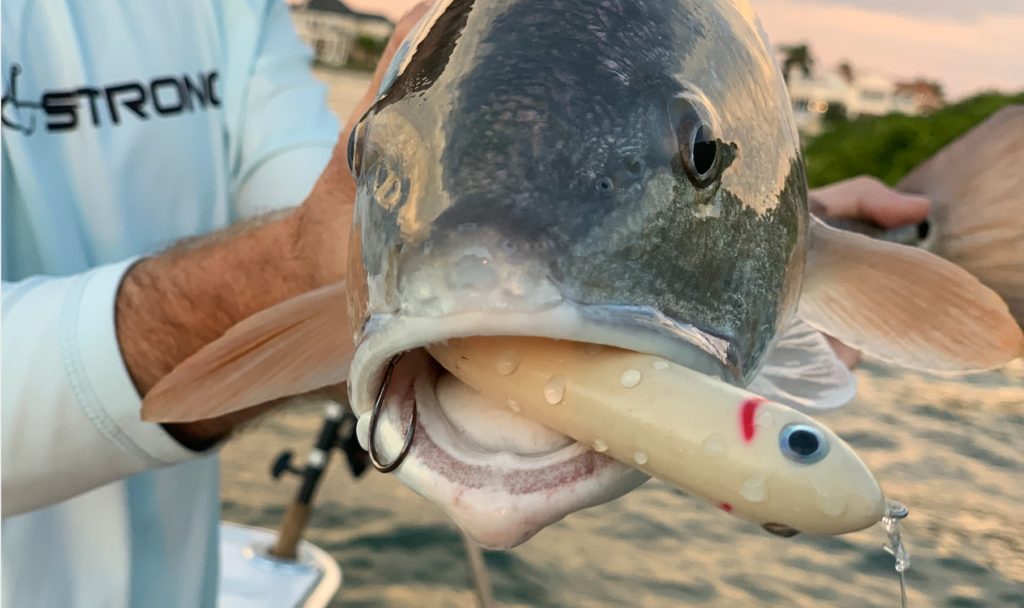
What a crazy experiment!
I love how Pat went so deep on one lure in one year and learned more about throwing topwaters than most people ever will in a lifetime.
Do you think you could do this with just one lure?
Have any questions about topwater lures?
Let me know down in the comments!
And if you know someone who likes to geek out on topwater lures like we do, please TAG or SHARE this with them!
P.S. Want access to our best fishing spots and tips, plus discounts to our online tackle store? Click here to join us and Pat in the Insider Club!
Related articles:
- THE TRUTH ABOUT TOPWATER LURE COLORS (AND WHETHER OR NOT COLOR MATTERS)
- HOW FAST TO RETRIEVE TOPWATER LURES (TO CATCH MORE FISH)
- TOPWATER LURE TEST: SUPER SPOOK JR. VS LIVETARGET MULLET (ROUND 1)
Disclaimer: When you buy through links on our site, we sometimes earn affiliate commission from places like Amazon, Bass Pro, Tackle Warehouse, etc. It’s one more way we can help you quickly find the best deals on the web while making sure we’re still around to serve you for years to come (and you do want us to be around to help you catch fish for many more years, right)?
Related categories:
STOP WASTING TIME ON THE WATER!
Do what the “SMART ANGLERS” are doing and join the Insider Club.
Here’s what you’ll receive today when you join:
- Weekly fishing reports and TRENDS revealing exactly where you should fish every trip
- Weekly “spot dissection” videos that walk you through all the best spots in your area
- Exclusive fishing tips from the PROS you can’t find anywhere else
- Everything you need to start catching fish more consistently (regardless if you fish out of a boat, kayak, or land).

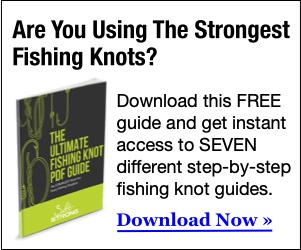





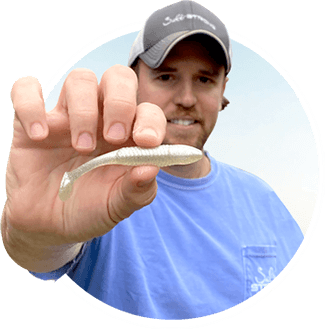
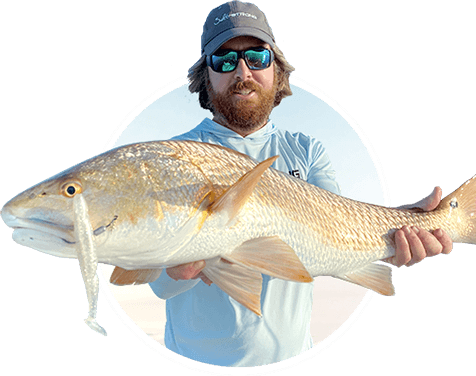
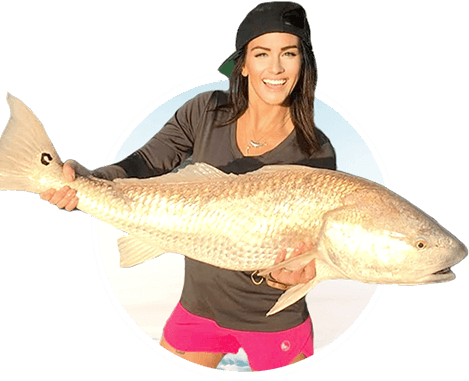
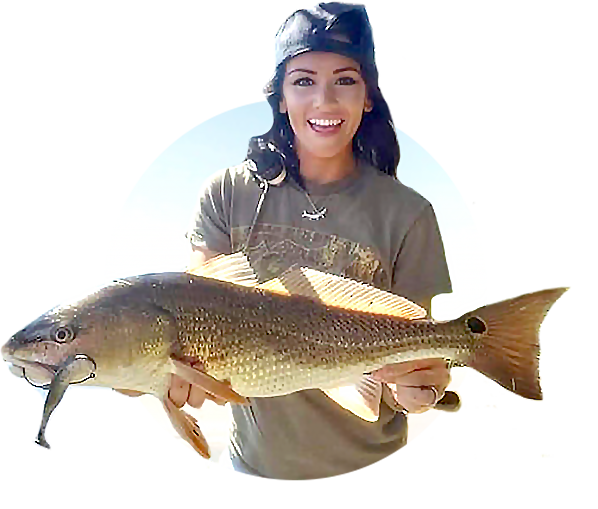
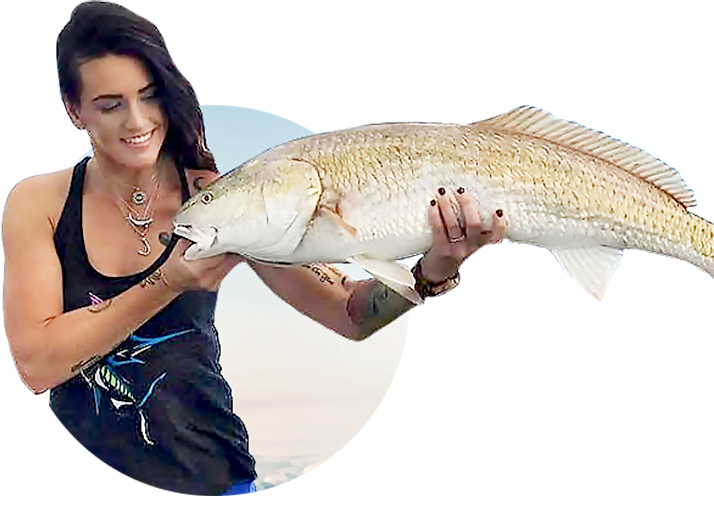
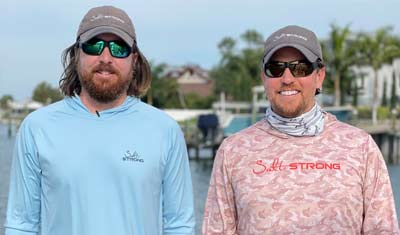
Hello Pat. I want to thank you. That is one of the best articles I have ever read. It is concise and addresses the important issues. Keep up the good work and you can go fishing in my boat anytime!
Thank you so much Gary! This means a lot!
I’m glad you enjoyed it, I know I did doing the experiment. Maybe we can cross paths one day and get out on the water together.
Hi Pat, What single hooks do you like on that prop bait? Thanks, Jon
Hello Pat, Great Podcast. Could you tell which brand of line you prefer to use? Thanks, Jon
Excellent podcast! Finally got around to watching/listening to this. Learned a lot from your crazy dedication to your experiment. Topwater fishing is without a doubt my favorite, but unfortunately not the best option under all conditions or seasons. A Spook has been my favorite search lure during the warmer months. You’ve inspired me to finally try some of those lures that have been in my box since the dark ages but I’ve never used like the Chugger and Prop baits. Will definitely have to get some smaller than my standard Spook Jrs and Skitter V13s to try earlier in the Spring to see if it increases my action. Although I’ve been skeptical of scents, I did think this past year that adding some ProCure to my lure seemed to have an effect when I was in spots I was convinced had fish but I wasn’t getting any blow-ups.
Also learned today that Redfish make a V wake behind the topwater lure. I had that happen so many times this past year but never knew what was following.
Wow! Pat! Great job! You actually followed through on it and did it! I remember a meetup that you and I and Jason Klazon and a few other Insiders fished out of Patillo Creek. You and i fished that large patch of weeds just north of Patillo Creek and you pulled a few nice Reds out of it…while i watched! Lol. Shortly after that we all ended up getting chased off the water by that storm that rolled through! That was a long paddle back too! Good times!
Thanks for passing on all of this great intel! Anyone who follows your reports knows they are always detailed and informative. Great to see you with Joe, Luke and Tony!
Pat, I finally got to see the podcast today! AWESOME! My wife and I really want to get on the water together someday.
Thanks Daniel! We’ll definitely have to make plans to link up one day.
Great review and podcast. So much great information. Makes me want to cast some top waters this weekend – even though worst season to do so. Great work and way to stick with using only one type of lure all year.
Thanks David! You never know a what can happen out there. I would definitely throw them as soon as the water starts to warm up.
Great podcast, gentlemen! I had the honor to fish with Pat in Dec. 2019 out at the Patillo Creek area in the Northern Indian River. It was a fairly windy & cold day, but we were still able to catch some decent fish (trout, reds, & snook) mostly on slow rolling paddle tails & jerkshads on that day. All while using our learned Salt Strong knowledge. of course. I bring this story up because I remember back then Pat talking about his wanting to start his topwater lure experiment & January, & run it throughout 2020. I highly applaud your perseverance in sticking with this experiment, Pat – especially throughout this past crazy year that we just went through. Can’t wait to catch up with you again for a future in-person trip, & pick up some hands up topwater knowledge from a true topwater Master now. Great work, man! Thank as for sharing this knowledge with all of us.
Thanks Jason! I remember that day, it was a good time for sure. We’ll definitely have to meet up again soon. Now that the experiment is over I’m like a kid in a candy store!
Baitcasters.
Lube is all. Lube that damps the cast surge but frees up during the flight. (Resets itself)
Choose the correct lube for the spool shape, mass and loading.
Everything else becomes easy. (MF action always smoother for casting)
Ti tip top essential. Change it if necessary.
Ask the boys to find you variable viscosity casting reel lube. I won’t promote.
Rgds
great pod cast! guess i am going shopping. thanks to the SS family and all the great info. a lot of fun learning. happy new year all.